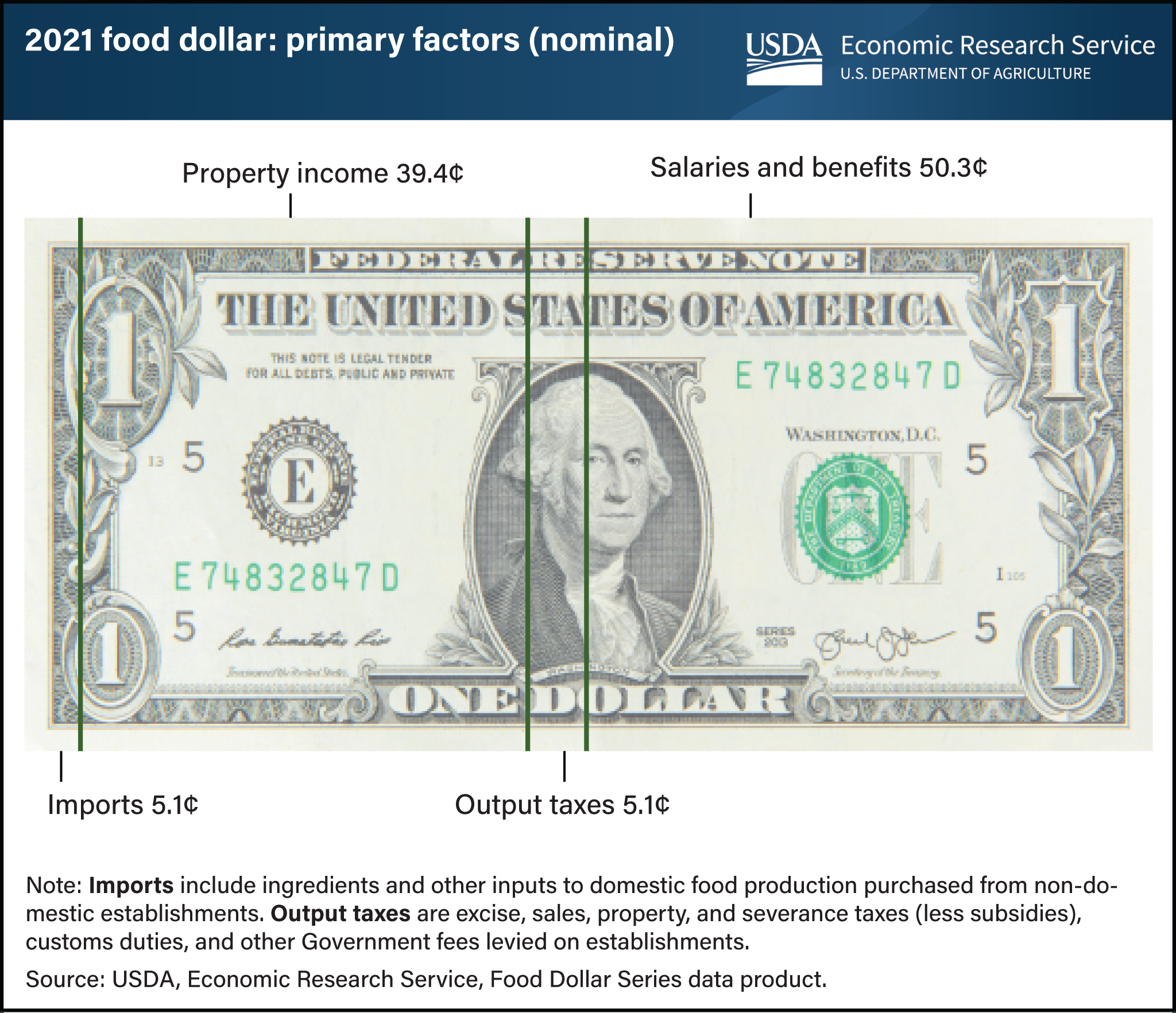Food dollar’s property income share remained at historic high in 2021
- by James Chandler Zachary and Quinton Baker
- 2/2/2023

In 2021, the average dollar spent by U.S. consumers on domestically produced food returned 39.4 cents as property income. Property income is income received by owners of capital assets such as land, equipment, and intellectual property after they pay for intermediate inputs, labor, and output taxes. The 39.4 cents as property income marked a 0.3-cent increase from a revised 2020 estimate of 39.1 cents and the second year in a row in which property income’s share of the food dollar set a record high for USDA, Economic Research Service’s Food Dollar Series. The share of the food dollar that compensates labor through salaries and benefits was 50.3 cents in 2021, a 1.2-cent decrease from 2020. The remaining food dollar shares were each at 5.1 cents for output taxes (excise, sales, property, and severance taxes less subsidies, customs duties, and other government fees) and imports, which include imported ingredients and other inputs needed for domestic food production. Annual shifts in the primary factor shares of the food dollar may occur for a variety of reasons, including changes in the mix of foods consumers buy, the balance of food consumed at home and away from home, and changes in primary factor markets for non-food production. The data for this chart are available for the years 1997 to 2021 and can be found in Food Dollar Series, updated November 17, 2022.
We’d welcome your feedback!
Would you be willing to answer a few quick questions about your experience?

